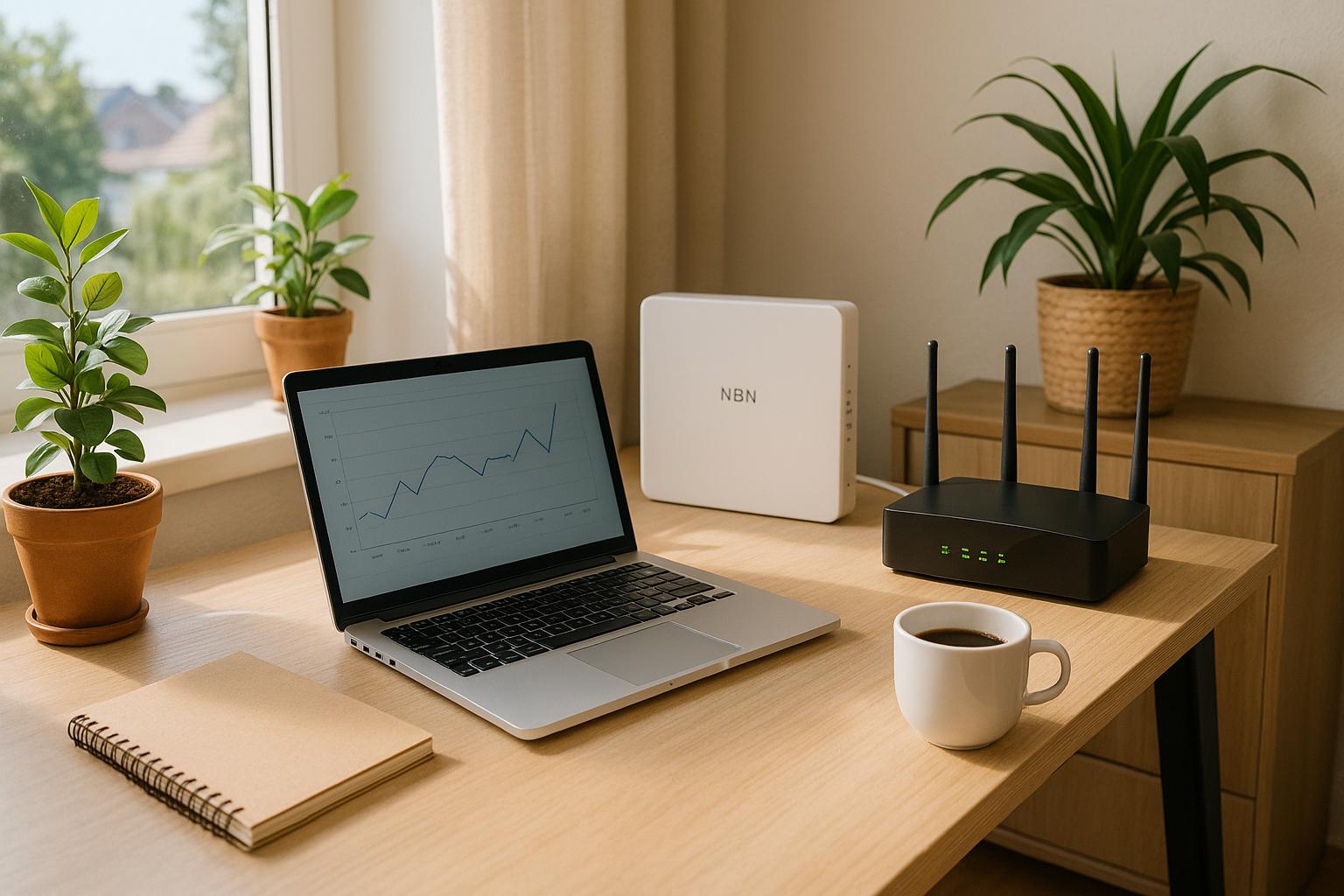It’s no secret that in today’s digital age, having a robust home internet setup is as crucial as having electricity or running water. If you’re living in South Australia and trying to navigate the often-confusing world of networking hardware, you’re not alone. Whether you’re an ordinary bloke or sheila trying to figure it out, understanding the differences between a modem, a router, and a mesh network will help you get the most out of your NBN plan. Let’s dive into these essential components.
Modem: The Gateway to the Internet
First things first, the modem is your ticket to the online world. Imagine the modem as the translator between your home and the internet provided by your Internet Service Provider (ISP). Here’s what you need to know:
- Connection to ISP: Your modem connects directly to your ISP using a coaxial cable, fibre optic cable, or DSL, acting as the first point in your home’s internet journey.
- Data Conversion: The modem translates the internet connection into a format that your devices can understand.
- Essential Component: Without a modem, accessing the internet is simply out of the question, no matter how flash your router or mesh setup might be.
Router: The Central Hub
Moving from the modem, the next piece of the puzzle is the router. This device distributes the internet connection from the modem to the various devices in your home.
- Connection to Modem: Think of the router as the workhorse; it takes the internet signal from the modem and spreads it like Vegemite on toast.
- WiFi and Wired Connections: Routers broadcast WiFi signals and also offer wired Ethernet connections to devices for more stable connectivity.
- Single Access Point: Traditional routers send out WiFi from a central point. This setup can lead to signal dropouts in larger spaces, especially if your home has a funky layout.
- Limitations: In a large or multi-story house, routers can struggle, and extenders might be needed, making the network more complex and potentially less reliable.
Mesh Network: Extended and Reliable Coverage
A mesh network is your best mate if you need comprehensive coverage across your home. Let’s explore why:
- Multiple Access Points: The mesh network consists of a main router and satellite nodes set up throughout your house, ensuring seamless internet connectivity.
- Seamless Coverage: The nodes in a mesh network chat among themselves, making sure there are no dead spots as you move about your home.
- Self-Configuring: If a node experiences a hiccup, the network automatically reroutes traffic to maintain steady signal strength.
- Scalability: Need more reach? No worries, add more nodes as your needs grow, making it adaptable for the long haul.
Key Differences: Router vs. Mesh Network
When it comes to choosing between a traditional router and a mesh network, here are the primary differences:
Coverage
- Traditional Router: Offers coverage from a single spot, potentially leading to dead zones in larger homes.
- Mesh Network: Provides broad coverage with multiple nodes, ensuring uniform signal strength throughout your entire home.
Performance
- Traditional Router: Could become bogged down with many devices, causing lag and dropped connections.
- Mesh Network: Handles multiple devices effortlessly, making it great for busy households where everyone’s online at once.
Setup and Management
- Traditional Router: Often requires manual setup and might involve extenders, adding complexity.
- Mesh Network: Usually comes with a user-friendly app for setup and ongoing management, making it a breeze to use.
When to Choose Each Option
Traditional Router
- Small Spaces: Ideal for smaller homes or offices with limited devices.
- Basic Needs: Perfect if your internet requirement is straightforward without too many devices leeching off it.
- Cost-Effective: Generally cheaper than mesh networks, a great choice for budget-conscious users.
Mesh Network
- Large or Multi-Story Homes: Best for expansive or multi-level homes where comprehensive coverage is necessary.
- High-Demand Scenarios: Suits households with multiple devices, streaming, gaming and smart home tech.
- Future-Proofing: Offers the flexibility to expand as your internet needs grow.
Wrapping It Up
To sum it all up, your choice between a traditional router and a mesh network should hinge on your specific home setup and internet needs:
- Modem: The non-negotiable piece needed to get online.
- Traditional Router: Simplest for small or budget setups.
- Mesh Network: The way forward for large homes or tech-heavy households needing robust, future-ready coverage.
Understanding these components helps ensure you’ve got the right gear to maximise your NBN experience. By selecting the setup that suits your specific needs, you’ll enjoy reliable internet at home, no matter the size or shape of your living space.



